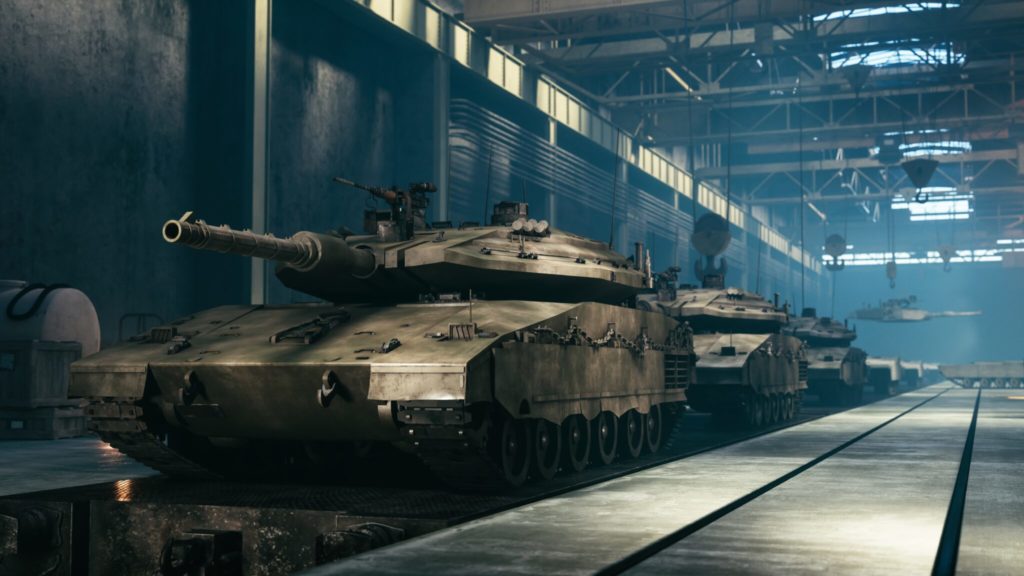Italian exports have soared: +86% in 5 years. “Purely profit-driven,” says Francesco Vignarca coordinator of the Italian branch of Control Arms
by Anna Violante for Atlas of Wars
“If we want peace, we must prepare for war,” wrote European Council President Charles Michel in his press release of 19 March, referring to the need to increase European military aid to Ukraine, and he soon outlined what Europe’s plans for the future ought to be: “We should aim to double what we buy from European industry by 2030.
It’s a fact that the European Union is debating the need to build a strong common defence system; indeed, its arms industry has significantly increased production in recent years and is trading with customers who are not necessarily European, according to the latest report from the Stockholm International Peace Research Institute (SIPRI). In particular, Italy is the country with the highest export growth (86%). The largest buyers of Italian arms – mainly land-based aircraft, planes, torpedoes, bombs, missiles and rockets – are, in order, Qatar (27% of sales), Egypt (21) and Kuwait (12). Turkey and Brazil follow. This makes Italy the sixth largest exporter in the world, after the United States, France, Russia, China and Germany.
To better understand why both Italian and European authorities keep insisting that the increase in production is linked to the ongoing conflicts, and to find out more about Italian producers, the distinction between heavy and light weapons markets, and the ports used for shipping, Atlas of Wars put a few questions to Francesco Vignarca, coordinator of the Italian Network for Peace and Disarmament (Rete italiana pace e disarmo – a branch of Control Arms).
Is such a huge increase in Italian arms exports linked to the 2 ongoing wars? “Certainly not. The authorities are presenting it to us as a direct response to what has been happening. But the claim that Europe must be prepared for an attack by Russia is a manipulation to justify military spending and thus economic advantage. The militarist choice was there before. 78% of exports go to the Near East. Asia, too, is a lucrative market. Whereas the United States and Europe don’t need weapons because they make them.”
What are the main industries in Italy? “Fincantieri and Leonardo. Fincantieri is 70% state-owned, and financed by the Ministry of Economy. It is Europe’s largest shipbuilding group, specialising in the design and construction of cruise ships, ferries, naval vessels, mega-yachts, conversions and repairs. Its shipyards are located in Monfalcone (Gorizia), Marghera (Venice) and Sestri Ponente (Genoa) for cruise ships and in Ancona, Palermo and Castellammare di Stabia (Naples) for transport ships. Military vessels are built in the Genoa and La Spezia areas. Ten years ago, they accounted for less than 30% of total production, whereas today they amount to 36%. In recent years the company has entered into joint ventures and is currently building corvettes in America. It is now considering a joint venture in Egypt to build warships. A recent visit by Italian Prime Minister Giorgia Meloni to Egyptian President Abdel Fattah al-Sisi is likely to result in an agreement for future production in Alexandria.
Leonardo SpA is an Italian public company active in the defence, aerospace and security sectors. Its largest shareholder is the Italian Ministry of Economy and Finance, which holds approximately 30% of the shares. It is the 12th largest defence company in the world and the largest in the European Union. It has a presence in twenty countries (42% in Italy and 58% abroad), including Israel. The company’s products, systems and services are used in around 150 countries. Leonardo specialises in building aircraft, but also drones, defensive weapons, torpedoes, etc. In short, it makes everything except ships and tanks. 83% of its production is currently military, while ten years ago it was 65%.
The reason why both companies have increasingly shifted to military production in recent years, even though producing for the state is less profitable, is that government contracts do not involve the risks of free market entrepreneurship. But both companies’ production growth is also due to the fact that last May the Italian far-right government lifted restrictions on the export of military weapons to Saudi Arabia, ending an embargo that had begun in 2019. From now on, with the amendments to law 185/90, the government intends to further strengthen the military industry by concentrating exports in its own hands and virtually eliminating the old control systems. The excuse for the reform is that a simplification of procedures will avoid too much bureaucracy and thus help Italian industry to compete with other nations.”
What are the ports of embarkation for weapons? “Ships sail and aeroplanes fly from where they are built, but the main departure point for weapons is Genoa, although other ports are also used, such as Cagliari for the last shipment to Saudi Arabia on the eve of the embargo, for instance. La Spezia, on the other hand, is the point of departure for small arms.”
What about light weapons, have their exports also increased a lot? “They are the least affected by the changes in recent years. The market is doing well, it will continue to do well, but not much has changed. The shift from hunting weapons to defensive ones is due to the fact that hunting is collapsing everywhere, especially in Italy. It is true that Beretta in Brescia (mainly guns) and Fiocchi in Lecco (ammunitions) also produce for the army and the police, but their growth does not suggest an escalation to war. The 85% increase in exports reported by SIPRI concerns Leonardo and Fincantieri: state-controlled warships, aircraft and helicopter gunships.”
Cover image by Alexander Steamaze on Shutterstock
